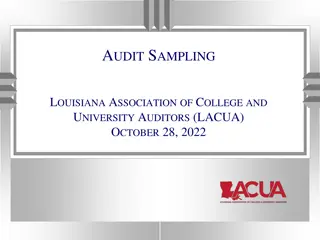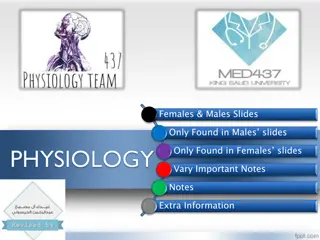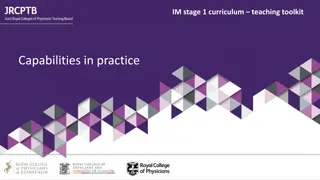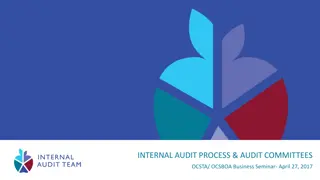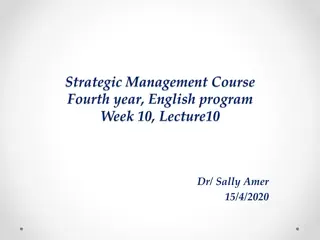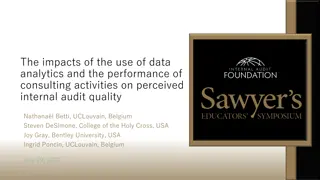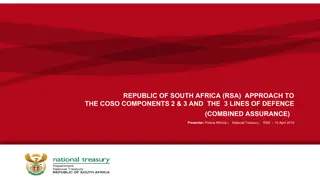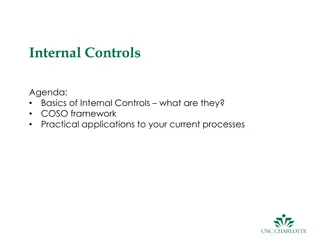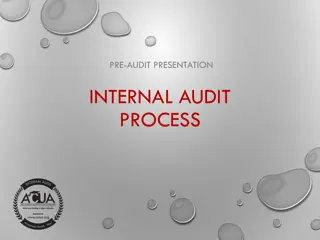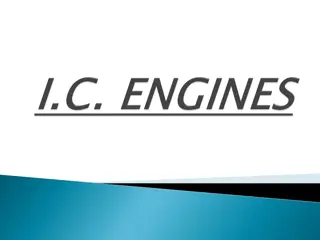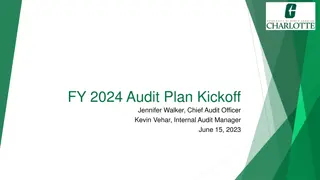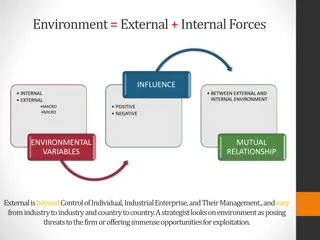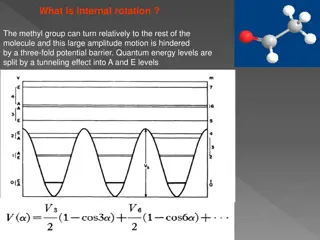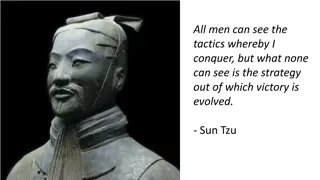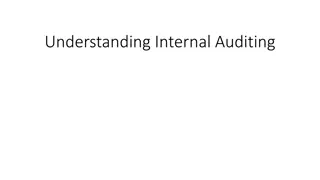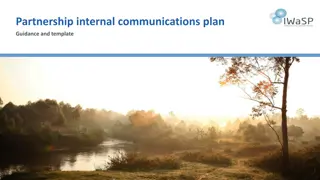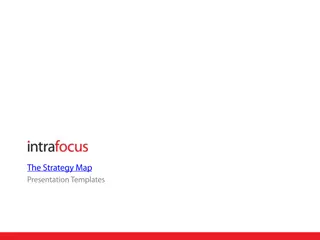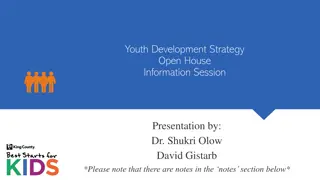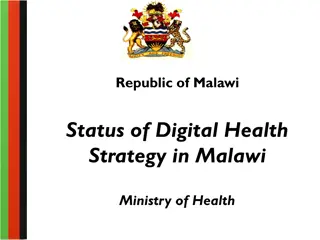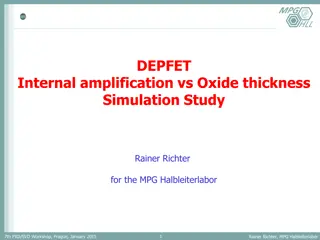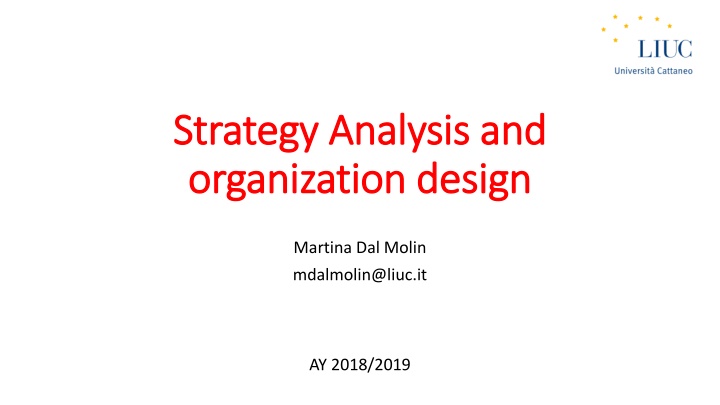
Strategic Analysis and Organization Design Overview
Explore the fundamental aspects of strategy analysis, resources and capabilities, internal factors, and categories of resources in organizational design. Learn how to align resources with external opportunities for superior performance in a competitive environment.
Download Presentation

Please find below an Image/Link to download the presentation.
The content on the website is provided AS IS for your information and personal use only. It may not be sold, licensed, or shared on other websites without obtaining consent from the author. If you encounter any issues during the download, it is possible that the publisher has removed the file from their server.
You are allowed to download the files provided on this website for personal or commercial use, subject to the condition that they are used lawfully. All files are the property of their respective owners.
The content on the website is provided AS IS for your information and personal use only. It may not be sold, licensed, or shared on other websites without obtaining consent from the author.
E N D
Presentation Transcript
Strategy Analysis and Strategy Analysis and organization organization design design Martina Dal Molin mdalmolin@liuc.it AY 2018/2019
A A basic basic framework for strategy framework for strategy analysis analysis PEST PESTLE Analysis THE COMPANY THE ENVIRONMENT Goals and values Resources and capabilities Structure and systems Competitors Customers Supplier STRATEGY Porter s Five forces framework; Competitor Intelligence 2
Resources Resources and capabilities and capabilities AY 2018/2019
Strategy and Strategy and internal capabilities capabilities internal resources resources and and Strategy is concerned with matching organization s resources and capabilities with the opportunities that arise from the external environment. An organization must have a profound understanding of its resources and capabilities in order to select a strategy that exploits organizations key strenghts It is important to distinguish between: o Resources, i.e. the productive assets owned by an organization o Capabilities, i.e. what an organization can do Resources must work together to create organizational capbilities since they are the essence of superior performance AY 2018/2019 4
Categories Categories of of resources resources (1/2) (1/2) TANGIBLE RESOURCES They refer to financial resources and physical assets, identified and valued in the financial statement The aim is to understand their potential for creating competitive advantage: o What opportunities exist for economizing on their use? o What are the possibilities for employing ezisting assets more profitably? AY 2018/2019 5
Categories Categories of of resources resources (2/2) (2/2) INTANGIBLE RESOURCES They refer to non-tangible resources and they can contribute to competitive advantage much more than tangible resources do Some examples are: o Reputational assets, e.g. brand o Technology, e.g. intellectual property HUMAN RESOURCES They refer to the productive services that human being offer to the firm in term of skills, knowledge and decision-making abilities AY 2018/2019 6
Organizational Organizational capabilities capabilities Considered alone, resources on their own are not really productive we need organizational capabilities, i.e. an organization s capacity to undertake a particular productive activity Core capabilities refer to the competencies that are fundamental for a firm performance and strategy To match resources and capabilities with strategy formulation three steps are necessary for the appraisal of rsources and capabilities AY 2018/2019 7
Appraisal Appraisal of of resources resources and capabilities (1/4) and capabilities (1/4) STEP 1) IDENTIFICATION OF KEY RESOURCES AND CAPABILITIES 1) List key resources and capabilitiesfor both the demand and the supply side, for example is it possibile to start by considering the KSFs 2) Asking our self what capabilities and resources do these KSFs imply 3) For example, in the case of Volkswagen: Resources and capabilities: Manufacturing capabilities New product development capabilities Global distribution Brand strenght KSFs: Low-cost production Attractive design Use of the latest technologies Financial strenghts AY 2018/2019 8
Appraisal Appraisal of of resources resources and capabilities and capabilities (2/4) (2/4) STEP 2) APPRAISING RESOURCES AND CAPABILITIES 2 CRITERIA 1) IMPORTANCE It does not simply imply loooking at customers choice criteria, but it means identifying which resources are scant and that are therefore crucial in term of strategy formulation 2) RELATIVE STRENGHT To identify and apprais company s capabilities, managers must look broadly and from different perspectives, e.g. start with focus groups and then benchmarking capabilities 3) The result is the identification of key strengths and key weaknesses AY 2018/2019 9
Appraisal Appraisal of of resources resources and capabilities (3/4) and capabilities (3/4) STEP 3) DEVELOPING STRATEGY IMPLICATIONS How do we exploit our key strenghts most effectively? The task is to formulate our strategy to ensure that these resources are deployed at the greatest effect If a company has a different capabilities profile, this implies differentiation of strategies within the organization AY 2018/2019 10
Appraisal Appraisal of of resources resources and and capabilities (4/4 capabilities (4/4) ) STEP 3) DEVELOPING STRATEGY IMPLICATIONS What do we know about our key weaknesses in terms of upgrading them and reducing our vulnerability to them? Our can the organization fill this resource gap? It means investing in those resources and capabilities where an organization is at disadvantage to its main competitors AY 2018/2019 11
Stakeholders Stakeholders analysis analysis AY 2018/2019
Stakeholders and strategy Stakeholders and strategy Stakeholders, i.e a person, a group or an organization that has interest or concern in an organization. Stakeholders can affect or can be affected by the organization s actions, objectives and policies Stakeholders matter in strategy formulation! Stakeholders analysis AY 2018/2019 13
Stakeholders Stakeholders analyisis analyisis (1/3) (1/3) Stakeholder s analysis is a tool to assess how the interest of the different stakeholders shoul be addressed Stakeholder s analysis is a tool to weight and balance all of the competing needs and demands of all those people who can be affected by the strategy of an organization Is it possibile to distinguish between two categories of stakeholders: o Primary stakeholders, i.e. those ultimately most affected either positively or negatively by an organization s action o Secondary stakeholders, i.e. a person or an organization indirectly affected by an organization s strategy AY 2018/2019 14
Stakeholders Stakeholders analyisis analyisis (2/3) (2/3) Stakeholder s analysis involves four analytical steps: 1) Identification of stakeholders and related interests 2) Assessment of stakeholders influence and importance 2.1) INFLUENCE, i.e. extent to which individuals, groups or organizations can persuade or coerce others into making decisions or taking certain actions stated otherwise it refers to the power of controlling what decisions are made 2.2) IMPORTANCE, i.e. Refers to those stakeholders whose problems, needs and interests are a priority when a strategy has to be formulated AY 2018/2019 15
Stakeholders Stakeholders analyisis analyisis (3/3) (3/3) 3) Determining the impact of stakeholders interest I N F L U E N C E HIGH MANAGE CLOSELY KEEP SATISFIED MONITOR KEEP INFORMED LOW LOW HIGH 4)Identification of participation tools IMPORTANCE AY 2018/2019 16
SWOT Analysis SWOT Analysis AY 2018/2019
A A basic basic framework for strategy framework for strategy analysis analysis PEST PESTLE Analysis THE COMPANY THE ENVIRONMENT Goals and values Resources and capabilities Structure and systems Competitors Customers Supplier STRATEGY Porter s Five forces framework; Competitor Intelligence SWOT Analysis 18
SWOT Analysis (1/2) SWOT Analysis (1/2) SWOT Analysi is a framework to evaluate company s position (in term of competitive advantage) and to develop strategic planning To develop strategic planning, an organization has to be aware of its key strenghts and weaknesses A SWOT analysis is designed to facilitate a realistic, fact-based and data driven look at the strenthgts of an organization SWOT stands for Strenghts, Weaknesses, Opportunities and Threaths By using internal and external data, a SWOT analysis can tell an organization where it needs to improve internally, as well as developing strategic plans The technique can guide business towards strategies more likely to be successfull and away from those in which they have been, or are likely to be less successfull AY 2018/2019 19
SWOT Analysis (2/2) SWOT Analysis (2/2) STRENGHTS, describe what an organization excels at and what separates it from competition (e.g. a strong brand, loyal customer base, strong balance sheet, ) WEAKNESSES, they stop an organization from performing at its optimum level. They are areas where the business needs to improve (e.g. a weak brand, higher-than-average turnover, high level of debt) OPPOERTUNITIES, refer to favorable external factors that could give an organization a competitive advantage (e.g. entry in new market if a country cuts tarifs for importation) THREATHS, refer to factors that have the potential to harm or damage an organization. Common examples include rising cost for materials, increasing competition AY 2018/2019 20
EXERCISE EXERCISE SWOT Analysis for Coca Cola AY 2018/2019 21


